Govt Push Paves Way For OTR Recycling In Australia
- By Gaurav Nandi
- February 28, 2025

The Australian Government’s push for end-of-life tyre recycling, particularly through the use of crumb rubber in road construction, has been gaining momentum. With Western Australia and Queensland continuing to grow rapidly but key markets like Victoria falling away, challenges remain in expanding the use of crumb rubber, especially in New South Wales and South Australia. However, partnerships like that between Tyrecycle and Alcoa Australia are helping pave the way for the recycling of OTR tyres, creating new opportunities.
The Australian Government’s endeavour for recycling end-of-life (ELT) tyres has been lauded by industry experts in many mature markets. Since December 2021, Australia has prohibited the export of whole baled tyres, except for specific casings and retreads. The Australian Government emphasises a circular economy approach, which includes incentives for local manufacturing by procuring tyre-derived materials such as crumb rubber for asphalt and other civil applications. The Western Australian Government has used over 3,000 tonnes of crumb rubber for road projects in a single year.
However, challenges remain with the recycling of off-the-road (OTR) tyres, often disposed of at mining sites. Nonetheless, the proactive nature of the government, especially in Western Australia, has paved the way for OTR tyre recycling, with recyclers forming partnerships with mining companies to ensure a steady stream of supply.
One such collaboration is between Tyrecycle, the recycling arm of ResourceCo, and Alcoa Australia. Tyrecycle’s state-of-the-art recycling facility in East Rockingham, 40 kilometres south of Perth, has already welcomed its first load of used OTR tyres from Alcoa, which is a bauxite mining company.
Speaking to Tyre Trends on the current state of waste OTR tyres, Tyrecycle Chief Executive Officer Jim Fairweather stated, “Currently, an estimated 130,000 tonnes of OTR tyres are discarded annually; 50,000 tonnes in The Pilbara alone. Tyrecycle is processing about 15,000 tonnes per year and aims to expand its footprint into key mining regions like the Hunter Valley, Bowen Basin and Pilbara. These areas are pivotal to Australia’s coal and iron ore mining industries, presenting significant opportunities for waste management and resource recovery.”
He added, “Mining operators often choose the cost-effective route of burying waste tyres on-site, which hinders recycling efforts. While some companies recognise the importance of responsible waste management, regulatory enforcement is needed to make recycling a standard practice. Proactive companies in the mining sector are stepping up, recognising the reputational and environmental risks associated with poor waste management. However, broader adoption is hampered by minimal regulatory mandates.”
COLLABORATIVE MEASURES
The collaboration between Tyrecycle and Alcoa was driven by a mutual commitment to sustainable practices and innovation in waste management. For the recycler, it represented a strategic move to expand its capacity to process OTR tyres and, in the future, conveyor belts, which are significant waste streams in the mining sector. This partnership evolved over five years of discussions, trials and project planning.
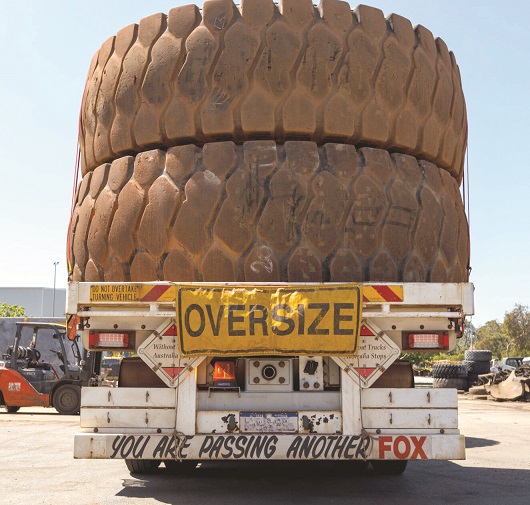 Equipped with a larger primary shredder capable of processing substantial pieces of OTR tyres, the plant in East Rockingham enabled the recycler to manage Alcoa’s tyre waste effectively. Prior trials at the recycler’s New South Wales facility ensured the material could be processed successfully, laying the groundwork for this full-scale collaboration.
Equipped with a larger primary shredder capable of processing substantial pieces of OTR tyres, the plant in East Rockingham enabled the recycler to manage Alcoa’s tyre waste effectively. Prior trials at the recycler’s New South Wales facility ensured the material could be processed successfully, laying the groundwork for this full-scale collaboration.
“Alcoa provides full OTR tyres, which are pre-processed using excavators to reduce size. These pieces are then fed into our fully automated plant, where they undergo a comprehensive process to produce crumb rubber as fine as 700 microns. The crumb rubber is repurposed into road construction material within Western Australia, creating a closed-loop system. The project aligns with the Western Australian Government’s push for the integration of rubber crumb in road infrastructure, ensuring sustainable outcomes,” said Fairweather.
He mentioned that the company has initiated partnerships with major mining operators, securing long-term offtake agreements to convert OTR tyres into value-added products for resale. While agreements are being finalised with several top-tier miners, the company aims to secure additional multi-year contracts, further cementing its position in the growing circular economy of Australia’s resource sector.
PRODUCTION
The company operates nine facilities culminating in a current processing volume of 180,000 tonnes annually with 30 percent spare capacity, allowing for up to 250,000 tonnes per year. Crumb rubber production stands at approximately 25,000 tonnes annually.
While mining tyres constitute a smaller portion of the company’s operations, the bulk of recycling comes from collecting approximately 20 million tyres annually from retail outlets across Australia, including regions such as Far North Queensland, Tasmania, Perth and the Pilbara. These include PCR, TBR, four-wheel-drive tyres, forklift tyres and even bicycle tyres. Roughly 80,000 tyres are collected daily.
Alcoa’s waste OTR tyres are entirely processed into crumb rubber for the Western Australian market. Beyond this, crumb rubber from other ELTs is sold into sectors such as the steel industry, adhesives manufacturing, playground surfacing, walking trails and civil applications. While these sectors are important, they don’t match the volumes required for road construction in Australia.
Additionally, tyre derived fuel (TDF) is manufactured in various sizes to cater to different customer needs. For example, 1.5-inch steel-free chips are used in power boilers, while 2-inch, 3-inch, 4-inch and 6-inch chips are utilised in cement kilns, both locally and for export to countries like Japan.
Offshore customers further process these materials into products like micronised rubber powder. The company also supplies feedstock to large tyre recycling businesses in India and Korea.
Commenting on whether Alcoa takes any of the tyre-derived product under the agreement, Fairweather informed, “Alcoa currently does not take any products, but there are opportunities in development, particularly in the smelting sector, where materials could be used as reductants.”
CONSUMPTION
While crumb rubber production serves local markets exclusively, TDF and steel exports continue to play a vital role in the company’s global strategy with a focus on improving quality and expanding domestic utilisation.
“The crumb rubber produced is fully consumed within Australia, reflecting a strong domestic demand for applications such as road construction. While 5,000 tonnes of TDF is consumed domestically in New South Wales, the vast majority – over 100,000 tonnes – is exported. That said, domestic consumption of TDF is poised to increase significantly with plans to redirect approximately 100,000 tonnes for use within Australia as part of ongoing pipeline development projects,” said the executive.
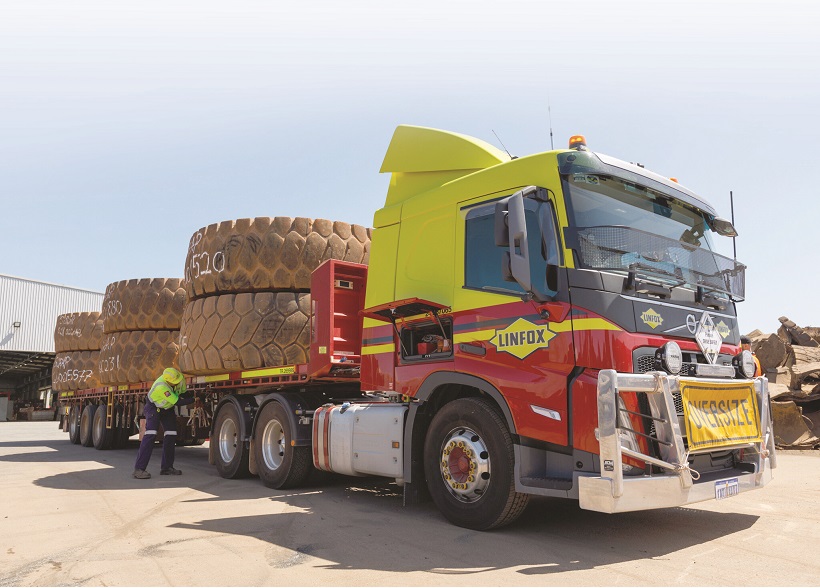
“Additionally, steel extracted from the tyres is traded globally as scrap. With the installation of steel-cleaning systems across all facilities, we now export steel with a much lower rubber contamination rate, reduced from 20 percent to 1-2 percent. This enhancement improves the value of the scrap and allows for more competitive pricing at the collection stage,” he added.
Commenting on the use of crumb rubber for roads, he said, “Road construction remains the largest consumer of crumb rubber in Australia, outpacing other uses. The Western Australian Government’s mandate to use crumb rubber in roads has been evolving over the past three years. Three years ago, there was virtually no sale of crumb rubber for road construction in Western Australia. However, today, Western Australia has become the second-largest market for crumb rubber used in roads across the country, despite having only 10–15 percent of Australia’s population.”
“The Main Roads Western Australia agency played a pivotal role by mandating crumb rubber in road specifications, significantly increasing demand. Additionally, the Western Australian Government supported this initiative by funding the creation of tyre processing infrastructure. This dual approach that includes stimulating private sector investment while ensuring procurement for recycled materials has been key to making these investments viable,” he added.
QUALITY CONTROL
Fairweather quipped that being one of the largest recyclers in the land has its perks when it comes to quality controls. With an expansive collection network that draws in tyres that are not only manufactured at home but imported from different regions ensures understanding of different chemical compositions.
As for ensuring the quality of crumb rubber, especially for road construction, he said, “We implement rigorous quality control procedures from testing the crumb rubber three times a day across all facilities to ensure that it is consistent and free of impurities. We take specific measures to ensure even sample collection and use advanced software to track and grade the rubber’s size distribution. Chemical tests are also performed periodically to maintain the integrity of the crumb rubber. Given the varied origins of the tyres, the company’s large scale allows it to homogenise these variations, ensuring a high-quality product.”
He added that quality is paramount because contaminants like metal can damage equipment used in road construction and asphalt applications. The company maintains a metal contamination level of less than 0.01 percent, which is crucial for the reliability and functionality of the crumb rubber in its applications.
Regarding the recycling of mining tyres compared to passenger and TBR tyres, he noted that there is a significant difference in the process. “Mining tyres are much larger and require different handling equipment and primary processing. These tyres need to be pre-processed to remove the bead before being reduced to a manageable size. In contrast, passenger and TBR tyres undergo a more standard shredding process, which then leads to various mechanical resizing depending on the final product,” said the executive.
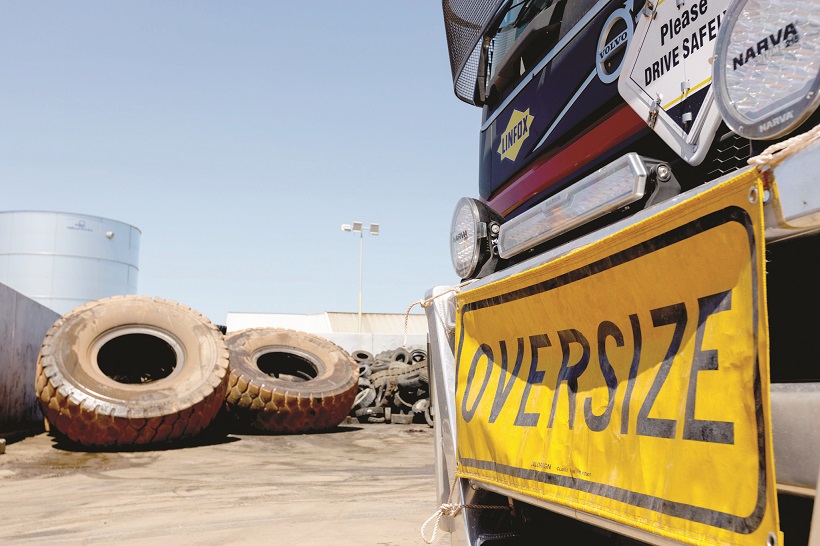
The TDF also goes through a rigorous quality control process.
MARKET FORCES
The largest market for crumb rubber in Australia has historically been Victoria, where it has been widely used in road construction. However, in recent times, Victoria’s market has faced challenges, largely due to budgetary pressures that have led to delays or cancellations of road projects. Despite this, it has remained the leader in crumb rubber consumption for roads.
Western Australia and Queensland are closely matched, coming in second for crumb rubber usage. On the other hand, New South Wales (NSW) and South Australia are behind in their adoption of crumb rubber in road construction, with NSW, particularly Sydney, significantly lagging. This presents an opportunity for growth in those regions, as they could start to increase their usage to match the other mainland states.
Tasmania, due to its smaller population and limited road construction, uses less crumb rubber, but this is proportional to the region’s size and needs.
“The collaboration with Alcoa and the potential for them to purchase products in the future is still under discussion. Both parties are open to exploring further development of this partnership. Alcoa has proven to be a strong partner, and there are good opportunities for continued collaboration, especially in creating a circular process that benefits both Alcoa and the broader market,” averred Fairweather.
The growth strategy for the company focuses on expanding its production capabilities and increasing the value-added nature of its products. This includes ongoing investment in plant infrastructure and a focus on increasing market share, particularly in tyre collection volumes.
The company sees significant potential in the OTR sector, which is currently untapped, and plans to continue developing new products and processes to offer higher-value products rather than just TDF.
TDF, however, remains an essential part of the business. It plays a crucial role in tyre recycling by reducing landfill waste and offering a more environmentally friendly alternative to fossil fuels.
Trials on imported tyres were also successfully completed with full-scale processing set to begin imminently. Tyrecycle also plans to establish processing facilities in Central Queensland and Western New South Wales, reducing logistical barriers and enhancing service capabilities.
Tire Rack Co-Founder Mike Joines Inducted Into Tire Industry Hall Of Fame
- By TT News
- November 05, 2025
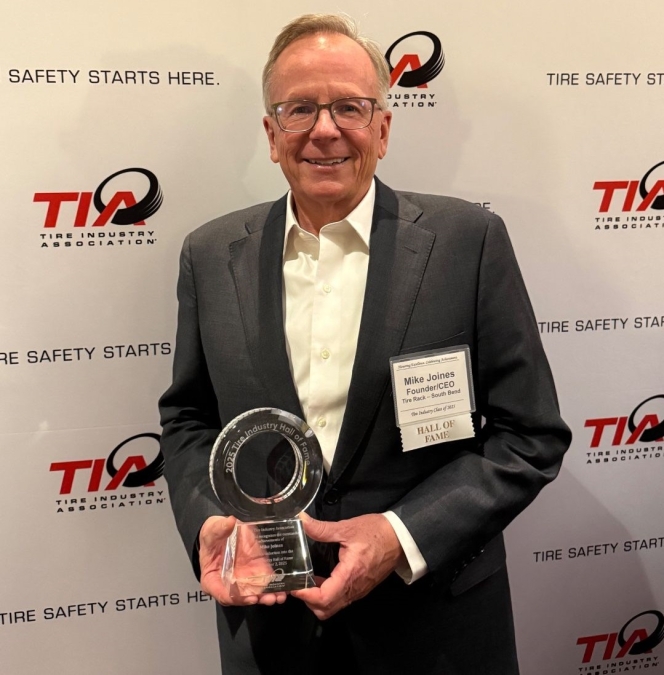
Tire Rack is celebrating the induction of its co-founder and longtime CEO, Mike Joines, into the Tire Industry Hall of Fame. The company credits Joines' automotive passion as the foundational spark for its mission to transform the tyre industry. Under his leadership, Tire Rack pioneered one of the first e-commerce platforms for tyre retailing, fundamentally changing how consumers research and purchase tyres.
The company’s philosophy, established by Joines, centred on empowering customers through comprehensive information rather than just completing a sale. This customer-first approach was built upon providing detailed product reviews, performance testing data, side-by-side comparisons and expert guidance.
Tire Rack also acknowledges that Joines understood the critical role of its team, noting that the ingenuity and integrity of its employees have been the true driving force behind decades of innovation and sustained customer trust. The company honours Joines as an enthusiast, innovator and leader whose devotion remains a source of inspiration.
Goodyear Posts USD2.2 Billion Quarterly Loss As It Completes Divestitures Under Goodyear Forward Plan
- By Sharad Matade
- November 04, 2025

Goodyear Tire & Rubber reported a net loss of USD 2.2 billion for the third quarter of 2025, weighed down by significant non-cash charges, even as its “Goodyear Forward” transformation programme continued to deliver strong operational benefits and major divestitures were completed.
The tyre maker said segment operating income rose to USD 287 million in the quarter, reflecting USD 185 million in cost-saving benefits from Goodyear Forward, which helped offset inflationary pressures, lower volumes and the absence of prior-year insurance recoveries.
“We delivered a meaningful increase in segment operating income relative to the second quarter in an industry environment that continued to be marked by global trade disruption,” said Mark Stewart, Chief Executive Officer and President. “This growth underscores our strong product portfolio and the consistency of our execution under the Goodyear Forward plan, both of which we expect to support further acceleration in our earnings during the fourth quarter.”
Goodyear’s quarterly net sales were USD 4.6 billion, with tyre unit volumes at 40 million. The company recorded a USD 1.4 billion non-cash deferred tax asset valuation allowance and a USD 674 million goodwill impairment charge during the quarter. Adjusted net income was USD 82 million, compared with USD 102 million a year earlier.
The company stated that all planned asset sales under its Goodyear Forward plan had now been completed, generating total gross proceeds of approximately USD 2.2 billion, which will be used to reduce debt and reinvest in growth.
On 31 October, Goodyear finalised the sale of the majority of its Goodyear Chemical business to an affiliate of Gemspring Capital Management, LLC, for USD 650 million, subject to adjustments. At closing, Goodyear received approximately USD 580 million in cash, which reflected working capital adjustments, including those for intercompany receivables.
“With the sale of our Chemical business, we have completed all of the planned asset sales included in our Goodyear Forward transformation program,” said Stewart. “Additionally, we surpassed initial expectations, with total gross proceeds from the divestitures of approximately USD 2.2 billion. As a result, we have a more focused, streamlined portfolio that will allow us to grow our core products and services and achieve our vision of being #1 in Tires and Service.”
The sale included Goodyear Chemical facilities in Houston and Beaumont, Texas, as well as a research office in Akron, Ohio. The company retains its chemical plants in Niagara Falls, New York, and Bayport, Texas, as well as the rights to the products produced there.
By region, the Americas segment reported third-quarter sales of USD 2.7 billion, a 4.2 percent year-over-year decline, as replacement tyre volumes decreased due to high inventories of imported products in the US market. Segment operating income fell to USD 206 million from USD 251 million.
In Europe, the Middle East and Africa (EMEA), sales rose 4.4 percent to USD 1.4 billion, supported by favourable currency movements and stronger price/mix. Operating income increased to USD 30 million from USD 23 million a year earlier.
Asia Pacific sales fell 18.9 percent to USD 501 million, reflecting the sale of the Off-the-Road (OTR) tyre business and softer demand in Japan, Australia and China. Segment operating income dropped to USD 51 million from USD 72 million.
Goodyear said it expects to achieve about USD 1.5 billion in annualised run-rate benefits from the Goodyear Forward programme by the end of 2025.
Nitto Tire’s Tomo Mizutani inducted into Tire Industry Hall of Fame
- By TT News
- November 04, 2025
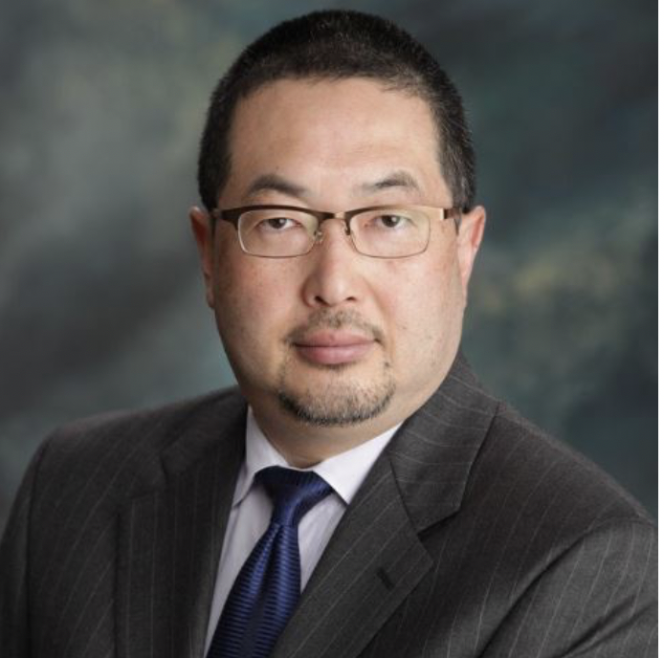
Tomoshige “Tomo” Mizutani, advisor and former Chairman and Chief Executive of Nitto Tire USA Inc., has been inducted into the Tire Industry Hall of Fame, one of the sector’s most prestigious honours.
The induction, hosted by the Tire Industry Association (TIA), will take place in Las Vegas alongside the 2025 SEMA Show, running from November 4 to 7.
With more than four decades in the tyre industry, Mizutani is widely credited with transforming Nitto Tire USA from a struggling operation in the early 1990s into a billion-dollar brand recognised for its innovation, performance, and strong connection with car enthusiasts.
“Our 2025 inductees embody the spirit of innovation and service that defines the tyre industry,” said Dick Gust, CEO of the Tire Industry Association. “Their contributions have improved safety, expanded opportunity, and shaped the way we do business worldwide.”
Mizutani’s approach combined deep market insight with bold risk-taking. By engaging with emerging communities of young car enthusiasts and later expanding into the off-road segment, he helped reposition Nitto as a brand built around passion and creativity.
Known for embracing innovation, Mizutani was among the first to champion enthusiast-driven product development and leverage digital and social media marketing to build brand loyalty. Under his leadership, Nitto cultivated a social media community exceeding 13 million followers, making it one of the most engaged automotive brands online.
“When new game-changing innovations would arise,” Mizutani said, “we viewed them as huge opportunities instead of risks.”
A frequent speaker at leading universities and industry events, Mizutani has shared his philosophy of creativity, resilience and perseverance with aspiring business leaders, often reminding audiences to “never ever give up.”
“This honour is beyond my dreams,” Mizutani said. “I’ve been privileged to meet and learn from industry legends who inspired me since my first day in America. I am deeply grateful for the incredible people who have guided, challenged, and supported me throughout my journey.”
Nokian Tyres Reports Fivefold Profit Jump as Pricing Pushes Offsets Market Weakness
- By TT News
- November 04, 2025
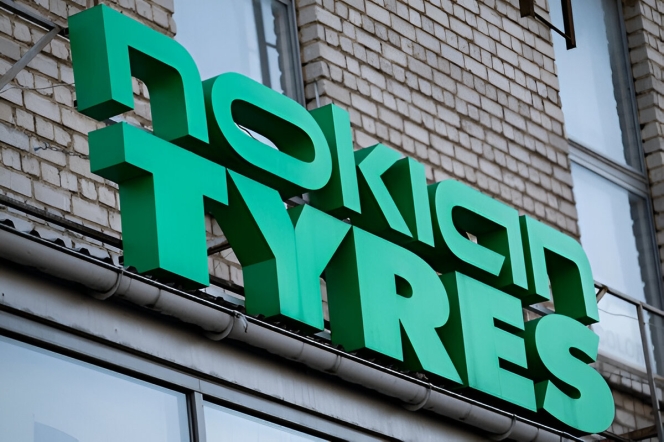
Finnish tyremaker’s third-quarter operating profit surges 427 percent to 21.8 million euros. Romanian factory ramp-up progressing as planned, now operating 24/7. Heavy investment phase nearing its end as the company targets a cash flow turnaround.
Finnish tiremaker Nokian Tyres reported a more than fivefold increase in third-quarter operating profit, as aggressive pricing increases in passenger car tyres and improved manufacturing efficiency offset challenging market conditions and years of operational upheaval.
The company, known for its winter tyres, said operating profit jumped 427 per cent to 21.8 million euros ($23.7 million) in the July-September period from 4.1 million euros a year earlier, when results were dragged down by 13.3 million euros in inventory write-downs related to contract-manufactured products.
Net sales grew 10.8 percent to 344.1 million euros at constant exchange rates, with the company achieving growth across all regions despite what it characterised as stable replacement tyre markets in Europe and declining conditions in North America.
“I have to say that I’m very pleased to tell you that we are really moving in the right direction,” President and Chief Executive Paolo Pompei told analysts on a conference call. “Our operating profit increased significantly. Obviously, this is very encouraging for the future journey that we have ahead.”
Pricing Strategy Delivers Results
The improvement was driven primarily by price increases implemented from late in the first quarter onward to offset rising raw material costs and to reposition products in Central Europe and North America, Pompei said.
In the passenger car tyre segment, which accounts for the bulk of Nokian’s business, net sales rose 13.2 percent to 234 million euros, whilst segment operating profit climbed to 38.9 million euros from 34.4 million euros. The segment’s operating margin rose to 16.6 percent, up from 16.4 percent a year earlier.
Interim Chief Financial Officer Jari Huuhtanen said price and mix effects contributed a positive 35 million euros to operating profit in the passenger car tyre segment in the quarter. However, this was partially offset by 25 million euros in supply chain costs, related mainly to non-recurring items from the previous year.
“Our average sales price with comparable currencies improved, and the sales of higher than 18-inch tyres increased significantly,” Huuhtanen said. “Segment operating profit improved due to price increases and a favourable product mix.”
Pompei acknowledged that volume declined 3.3 percent in the quarter but said this was “well justified by the comparability with the previous year, due to the action we made in order to release the slow-moving stock that we have accumulated due to the crisis in the Red Sea channel.”
Asked about the sustainability of price increases, given that larger competitors have recently lowered their price-mix assumptions, Pompei said: “We cannot keep increasing pricing. It was extremely important for us, again, to compensate for the increase in rising raw material costs and, at the same time, to gradually reposition in Central Europe and in North America.”
He added that the company was “not expecting the price increase to affect volume at this stage” beyond the comparison effects from last year’s inventory clearance.
Romanian Factory Hits Milestone
The company’s new factory in Oradea, Romania - described as the world’s first full-scale zero-CO2-emissions tyre factory - is progressing according to plan and is now operating four shifts to enable round-the-clock production.
Nokian said it would deliver approximately one million tyres from the Romanian plant this year, up from zero in 2024. The factory began customer deliveries in the second quarter.
“One million is the production, but the capacity already by the end of the year will be up to three million pieces and up to the end of next year, up to six million pieces,” Pompei explained. “We need to distinguish between production and capacity.”
He said the remaining capacity expansion would focus on mixing and semi-finished product lines rather than curing and building machinery, meaning capital expenditure requirements would be “really limited” for the next three years.
The Romanian facility has launched two new product lines for Central and Southern European markets, most recently the Powerproof 2, a premium ultra-high-performance summer tyre unveiled at an event in Spain attended by 160 guests from across the region.
Pompei said that in future, “more than 80 percent of what we sell in the European market will be supported by our Romanian factories for Central Europe as well as South Europe.”
North America Shines, Heavy Tyres Struggle
North America emerged as a standout performer, with sales surging 27 percent despite a declining market, driven by favourable tariff developments.
“We are finally doing extremely well in North America, and we are very pleased with the journey that we have done so far,” Pompei said.
Canada removed 25 percent counter-tariffs on U.S.-produced tyres on 1 August, whilst the United States reduced tariffs on EU tyre imports from 25 percent to 15 percent on 1 September. Nokian produces approximately 85 per cent of its U.S. volume at its Dayton, Tennessee, facility.
“Obviously, today we are in the ideal situation to deliver tyres from the US to Canada without duties,” Pompei said.
The company also disclosed a new partnership with American Tire Distributors (ATD), the largest national distributor in the United States. However, Pompei noted exposure was “relatively low” as the relationship was beginning.
However, the heavy tyres division struggled, with net sales falling 4.4 per cent to 55.4 million euros at constant exchange rates, as weakness in truck and agricultural tyre markets persisted. Segment operating profit dropped to 5 million euros from 7.5 million euros, impacted by lower volumes and inventory revaluation effects.
Asked when the agricultural market might recover, Pompei said: “I believe the agri business in particular is subject to cycles, and cycles can be long or short, but in general, obviously, we are now landing at the end of the second, I would say almost the second year of a downturn.”
He added: “I’m expecting the agri business at the level in particular to recover pretty soon in the next six to 12 months.”
Winter Season Outlook, Efficiency Drive
Looking ahead to the crucial winter tyre selling season, Pompei said the weather in September had been “a little bit too warm” but conditions were improving.
“Now it is getting colder, both in the Nordics as well as in North America,” he said. “We are expecting the winter tyre season to basically start, as I speak in this moment in November.”
The company’s flagship winter products continued to receive strong reviews, with the Hakkapeliitta 10 studded tyre and Hakkapeliitta R5 non-studded tyre taking top positions in multiple European tyre tests.
Nokian also announced it had begun personnel negotiations in Finland regarding efficiency improvements, which have resulted in eight permanent white-collar job cuts.
“This is part of our journey when we want to improve efficiency and productivity,” Pompei said. “This is necessary to support the company in this journey.”
The company’s Vianor retail chain reported improved performance, with net sales rising 7 per cent at constant exchange rates to 74.9 million euros, whilst the segment’s operating loss narrowed to 6.4 million euros from 6.6 million euros.
Nokian maintained its 2025 guidance unchanged, expecting net sales to grow and segment operating profit as a percentage of net sales to improve compared with the previous year.
The company said tyre demand in its markets is expected to remain at 2024 levels. However, it cautioned that “development of the global economy as well as geopolitical, trade and tariff uncertainties may cause volatility to the company’s business environment.”
For the first nine months, net sales grew 9.4 percent to 957.3 million euros, whilst segment operating profit rose to 40.2 million euros from 35.4 million euros. Segment EBITDA margin improved to 14.1 percent from 13.5 percent.
Asked about margin volatility in the passenger car segment, which has swung sharply on a quarterly basis over the past two years, Pompei said stability should improve.
“Of course, you will see more stability in the development of the margins moving forward, because now, finally, we can leverage our increased capacity, we can leverage an efficient manufacturing footprint,” he said.


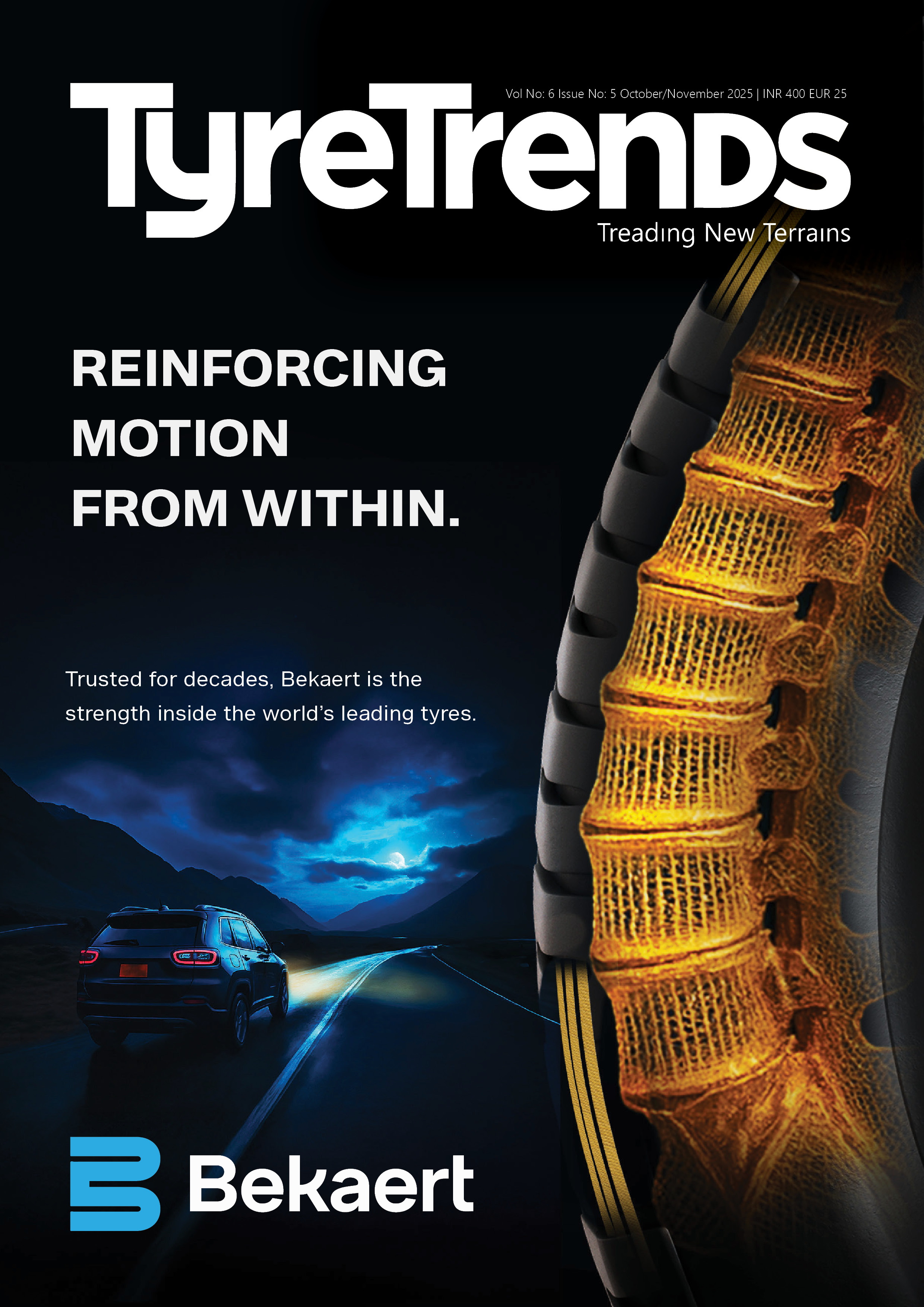
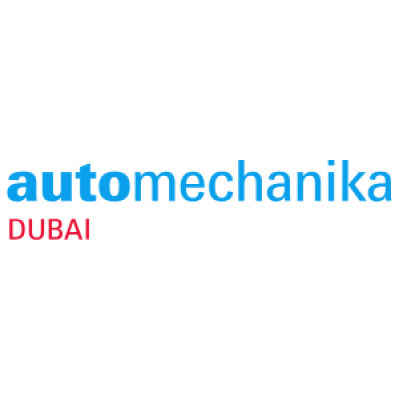



Comments (0)
ADD COMMENT